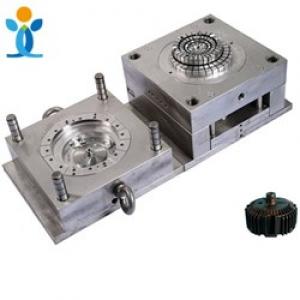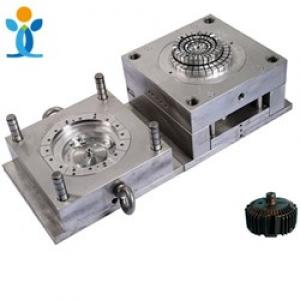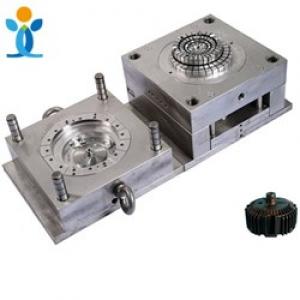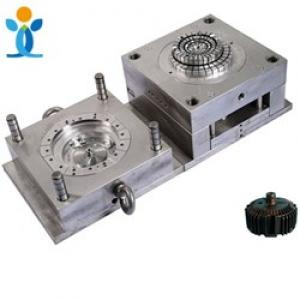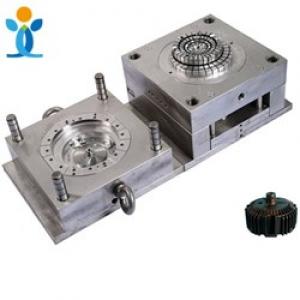how to settle flash and overflow defects
how to settle flash and overflow defects
flash, edge overflow and material overflow, mostly occurs at the opening and closing position of the die, such as the parting surface of the die, the sliding part of the slider, the gap of the insert, the hole of the ejector rod, etc. If the overflow is not solved in time, it will be further expanded, resulting in local collapse of the embossing die and permanent damage. The sharp edge of insert gap and ejector rod hole will also make the product stuck on the mold and affect demoulding.
The drape is essentially the excess left on the product after cooling in the gap where the plastic material enters the matching part of the mold. It is very simple to solve the problem of drape, that is to control not to let the melt enter the mold fit gap.
There are generally two situations when the plastic melt enters the mold fit gap: one is that the mold fit gap is already large, and the colloid is easy to enter; Another situation is that the mold fit gap is small, but the molten colloid is forced into it under pressure.
On the surface, it seems that flashes can be completely solved as long as the manufacturing accuracy and strength of the die are strengthened. It is necessary to improve the manufacturing accuracy of the die, reduce the fit gap of the die and prevent the entry of molten colloid. However, in many cases, the strength of the mold can not be strengthened indefinitely. When it is strengthened to any pressure, the colloid can not protrude into it.
There are both mold reasons and process reasons for the emergence of flashes. Check the process reasons. First, check whether the clamping force is sufficient. Only when the clamping force is sufficient and the phi is still generated, check the causes of the mold.
Methods to check whether the clamping force is sufficient:
1) Gradually increase the injection pressure. With the increase of injection pressure, the flashes also increases correspondingly, and the flashes is mainly generated on the parting surface of the mold, indicating that the clamping force is not enough.
2) Gradually increase the clamping force of the injection molding machine. When the clamping force reaches a certain value, the drape on the parting surface disappears, or when the injection pressure is increased, the drape on the parting surface will no longer increase. This clamping force is considered to be sufficient.
Methods to check whether there is sharp edge caused by mold manufacturing accuracy:
Fill the product just at a lower material temperature, lower glue filling speed and lower injection pressure (the product has a slight shrinkage). At this time, it can be considered that the ability of the melt to protrude into the matching gap of the die is very weak. At this time, if the spike occurs, it can be judged that it is a problem of die manufacturing accuracy and needs to be repaired. We can consider abandoning the process method to solve the generation of phi front.
It should be noted that the above "three low" conditions are indispensable. High material temperature, fast glue filling speed and high injection pressure will increase the local pressure in the mold cavity, enhance the ability of the melt to protrude into the mold fit gap, and expand the mold to produce a spike, although the product is not satisfied with the glue at this time.
The analysis of the causes of the spike is based on the premise of sufficient clamping force. When the clamping force is insufficient, it is difficult to analyze the causes of the spike. The following analysis is based on sufficient clamping force. Please pay attention to it.
According to several situations of phi front, the possibility of phi front:
The first case:
As mentioned above, under the conditions of low temperature, low speed and low pressure, when the product is not full of glue, the phi front has been generated. The possible main reasons are: insufficient mold manufacturing accuracy and excessive fit clearance;
The second case:
When the product is just full of glue, there is shrinkage in some parts, and there is no sharp edge; When the injection pressure is increased to improve the local shrinkage of the product, the phi front is generated. Possible reasons are:
1) The feed temperature is too high. If the material temperature is too high, the viscosity of the melt is low and the fluidity is good. The stronger the ability of the melt to protrude into the matching gap of the die, it will lead to the generation of phimosis.
2) The injection speed is too fast and the injection pressure is too high (resulting in filling supersaturation). Too fast speed and too much injection pressure, especially too much injection pressure, will enhance the ability of the melt to protrude into the mold fit gap, resulting in the generation of phi front.
3) The fluidity of plastics is too high. The better the fluidity of the plastic, the lower the viscosity of the melt, and the stronger the ability of the melt to drill into the matching gap of the die, it is easy to produce a spike. When the mold production has been completed, the depth of the exhaust groove of the mold and the matching gap of the mold have been finalized, and another kind of plastic with good fluidity is used for production, there will be a sharp edge.
4) The strength of the die is insufficient. When the design strength of the mold is insufficient, when the mold cavity bears the pressure of the plastic melt, it will deform and expand, and the colloid will protrude into the gap of the mold to produce a sharp edge.
5) Unreasonable product design. The local glue position of the product is too thick and shrinks too much during injection molding, which will lead to local shrinkage. In order to adjust the problem of local shrinkage of products, it is often necessary to use higher injection pressure and longer injection time to fill and maintain the pressure, resulting in insufficient strength and deformation of the mold, resulting in sharp edge.
6) Mold temperature is too high. High mold temperature can not only keep the plastic with good fluidity and small pressure loss, but also reduce the strength of the mold, which will also lead to the generation of phi front.
The third case:
It is the most common problem in injection molding production. It can not be solved by all process means, which is the biggest trouble for injection molding technicians. In this case, the main means is to repair the mold. The solutions are:
1) Local glue reduction of the product. Reduce the glue on the part of the product shrinkage. After the glue level is thinned, the product shrinkage problem can be improved, the injection pressure will be reduced, the mold deformation will be small, and the phi front can be restrained. This is the most effective and commonly used method.
2) Increase the glue inlet point. Increasing the pouring point can reduce the injection process and injection pressure, and the pressure on the mold cavity will be reduced, which can effectively solve the generation of phi. Increasing the pouring point, especially at the shrinkage position of the product, can have an immediate effect on reducing the injection pressure in the mold cavity. It is also one of the commonly used means.
3) Strengthen the mold locally. Sometimes the deformation of the formwork can be strengthened by adding a support head between the movable formwork and the thimble plate.
